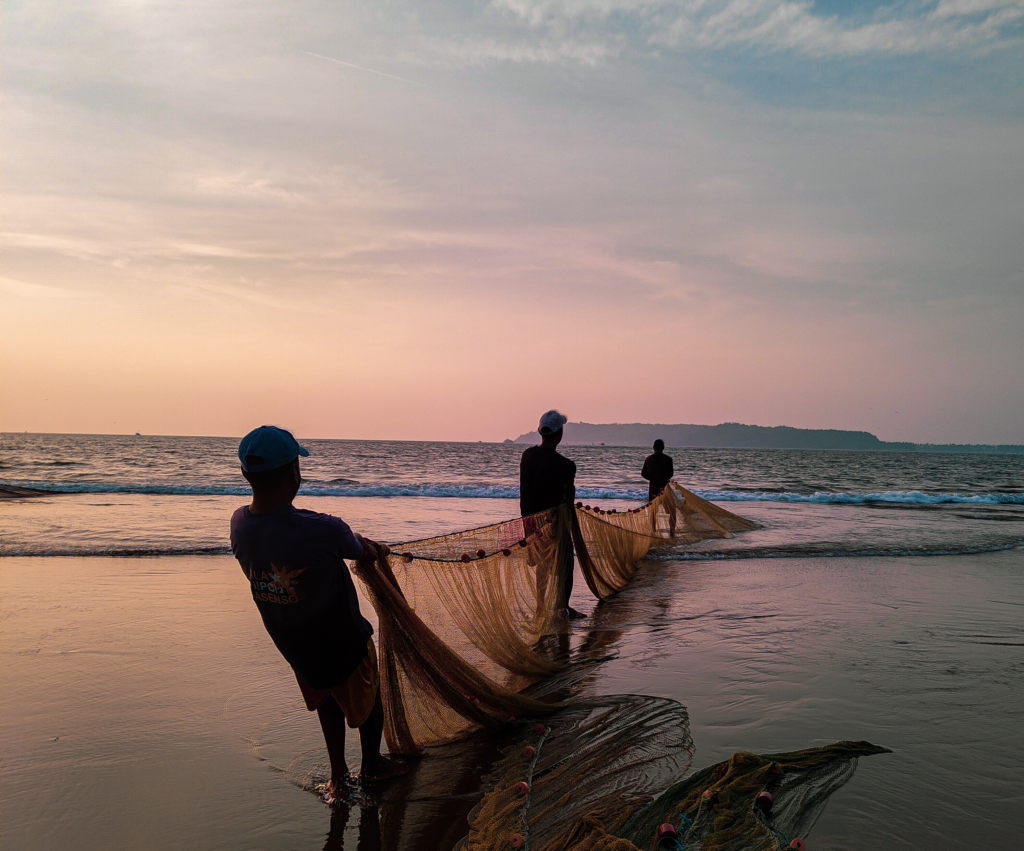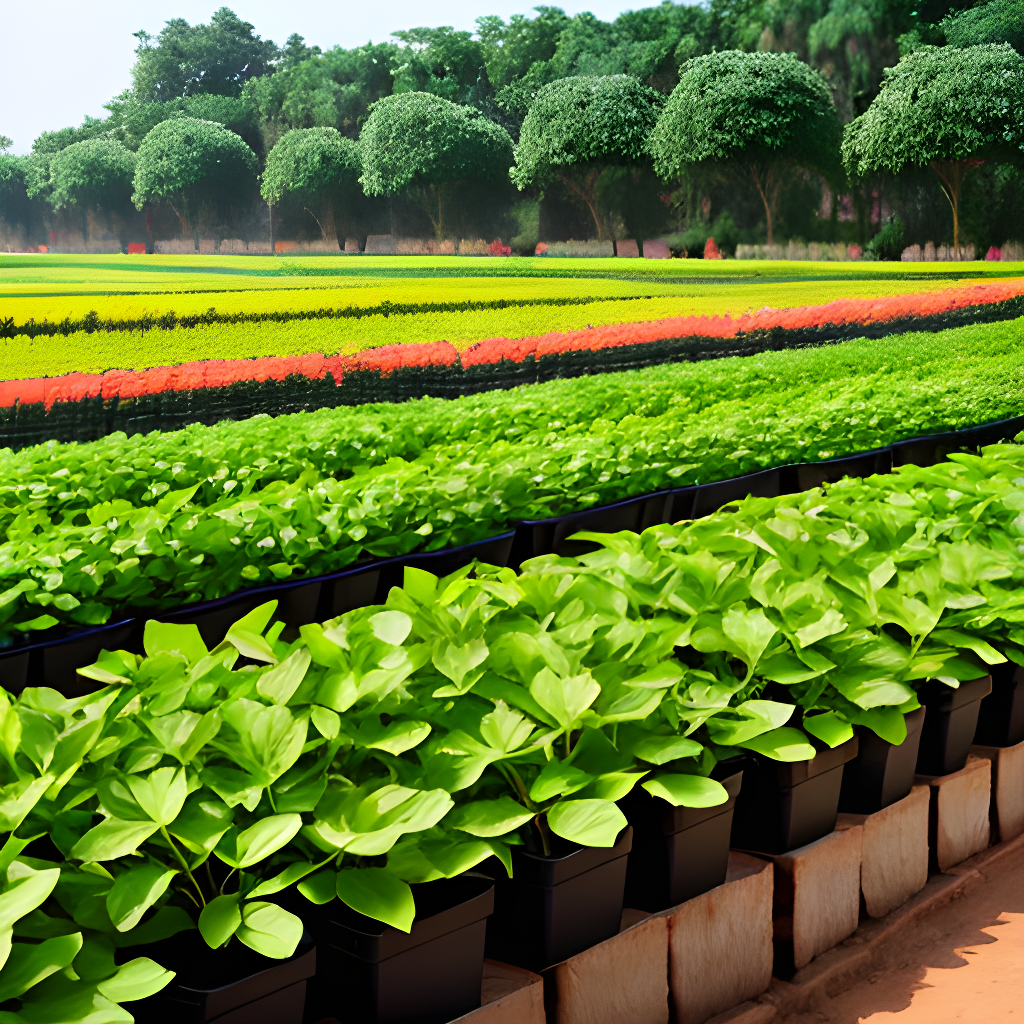Agriculture is truly considered as the backbone of Indian economy and it holds immense significance as it contributes a substantial portion to the country’s GDP. In 2021-22, it accounted for approximately 19% of the GDP, reflecting its pivotal role in driving economic growth. Moreover, agriculture plays a very crucial role in fulfilling the nutritional requirements of the vast population of India.
Notably, this growing sector also acts as a major employer, providing livelihoods to around 40% of the country’s population. It not only serves as the foundation for numerous allied industries but also creates employment opportunities and supporting economic development.
The term “agriculture” encompasses a wide range of activities, including crop cultivation, livestock rearing and management, forestry, horticulture, and fishery. Each of these activities has a significant impact on the overall economy, with positive or negative changes in the agricultural sector having a multiplier effect.
In addition to traditional farming practices, the allied agriculture sector, which includes horticulture, animal husbandry, food processing, fishing, and sericulture, plays a vital role in generating additional income for farmers and contributing to the GDP and exports of the country.
Allied agriculture is a vast and growing sector that has the potential to boost economic growth in India. By providing jobs, generating income, and supporting rural development, allied agriculture can help to reduce poverty and inequality.
Under the leadership of Prime Minister Narendra Modi, the Indian government has been dedicated to achieving new heights in the allied sectors of agriculture. This article aims to provide an overview of the different schemes and policies implemented in this regard.
Fishing Sector
The government has introduced a comprehensive range of schemes and initiatives to bolster the fishing sector and promote its sustainable development.

These schemes aim to address various aspects of the fishing industry, including fish production, infrastructure development, technology adoption, capacity building, livelihood support, and market access.
Here are some notable schemes for the Fishing Sector:
Blue Revolution
The initiation of this scheme took place during the fiscal year 2015-16, with a primary focus on tapping into the vast potential of the fisheries sector. With a substantial budget allocation of Rs. 3,000 crores spanning over a period of five years, this integrated scheme strives to bring about a significant and positive transformation in the lives of dedicated fishermen and farmers.
During the fiscal year 2022-23, India witnessed a record-breaking surge in seafood exports, achieving an all-time high in both volume and value terms (both US dollars and Indian Rupees). Despite facing several challenges in major export markets like the USA, India managed to ship a staggering 17,35,286 metric tons of seafood valued at Rs. 63,969.14 crore (equivalent to US$ 8.09 billion. This notable increase in production is a testament to the effectiveness of the scheme in enhancing the productivity and efficiency of the fisheries sector.
These encouraging outcomes not only highlight the success of the scheme but also demonstrate the substantial impact it has on the lives of those involved in the fisheries sector. Through its comprehensive approach and dedicated investments, the scheme has not only augmented fish production but also improved the livelihoods of fishermen and farmers, contributing to their economic well-being and overall quality of life.
Pradhan Mantri Matsya Sampada Yojana (PMMSY)
The Pradhan Mantri Matsya Sampada Yojana (PMMSY), a pioneering scheme, was launched on the 10th of September 2020 with the primary objective of promoting the sustainable development of the fisheries sector. This flagship initiative is set to play a crucial role in reshaping the landscape of fisheries in India. Over the course of five years, from the fiscal year 2020-21 to 2024-25, the government has allocated a substantial estimated investment of Rs. 20,050 crores to drive the success of this transformative scheme.
The PMMSY encompasses a comprehensive set of goals and strategies to revolutionize the fisheries sector. Its multifaceted approach aims to achieve significant outcomes such as increasing fish production, improving the livelihoods of fishers and fish farmers, generating employment opportunities, enhancing infrastructure, promoting the adoption of modern fishing techniques, ensuring the sustainable management of aquatic resources, and bolstering the export potential of fisheries products.
Furthermore, the government has introduced appealing assistance packages specifically tailored for start-ups and integrated units operating in the fisheries sector. These packages are designed to encourage entrepreneurship, innovation, and the establishment of self-sustaining enterprises within the fisheries industry. By providing financial support, technical guidance, and mentorship, the scheme aims to foster the growth and success of these budding ventures.
In addition to promoting entrepreneurship, the PMMSY is poised to create a significant number of employment opportunities. It is estimated that by the year 2024-25, approximately 55 lakh new jobs will be generated across various segments of the fisheries sector. This surge in employment will not only enhance the livelihoods of individuals but also contribute to the overall socio-economic development of the country.
Recognizing the challenges faced by fishing communities during the fish ban or lean period in both marine and land areas, the PMMSY includes provisions to provide support to affected families. Approximately 6 lakh families will receive livelihood and nutritional assistance during these periods. This support aims to alleviate the economic burden faced by fishing communities during times when fishing activities are restricted or less productive.
Kisan Credit Cards
In a significant move to support fish farmers, the government extended the facility of Kisan Credit Cards (KCC) to them during the fiscal year 2018-19. The Kisan Credit Cards, which were originally introduced to provide financial assistance to farmers engaged in crop production, were now made available to fish farmers as well. This extension aimed to address the specific working capital and short-term credit requirements of fish farmers.
By enabling fish farmers to access Kisan Credit Cards, they gained access to formal credit facilities from financial institutions such as banks. This helped them overcome financial constraints and meet their various operational needs, including the purchase of feed, equipment, and other inputs required for fish farming.
The Kisan Credit Cards facility offers several advantages to fish farmers. It provides them with a reliable and convenient source of credit, allowing them to manage their farming activities effectively. The credit can be utilized for purchasing inputs, meeting labor costs, investing in infrastructure, and managing working capital requirements.
Horticulture Sector
Horticulture, as an allied sector, is experiencing promising growth in India. The government has implemented several schemes and initiatives to support and promote the development of horticulture.

These schemes aim to enhance productivity, improve post-harvest management, provide technical assistance, and create market linkages for horticultural products.
Here are some notable schemes for the Horticulture Sector:
Mission for Integrated Development of Horticulture (MIDH)
The Mission for Integrated Development of Horticulture (MIDH) was launched with the objective of capitalizing on the geographical specialization of horticulture clusters and fostering integrated and market-led development across the entire supply chain, encompassing pre-production, production, and post-harvest activities. This scheme recognizes the diverse agro-climatic conditions in different regions of India and aims to harness their potential for horticulture production.
MIDH focuses on promoting sustainable horticulture practices, improving productivity, enhancing market linkages, and supporting value addition in the horticulture sector. It provides financial assistance and technical guidance to farmers, cultivators, and stakeholders engaged in horticultural activities. By integrating various aspects of horticulture, including cultivation, processing, marketing, and infrastructure development, MIDH aims to create a conducive ecosystem for the growth and development of the sector.
The efforts undertaken through MIDH have yielded remarkable results. Driven primarily by increased yields in fruits and vegetables, India’s horticulture production is projected to reach a record 350.87 million tonnes in 2022-23. This significant milestone underscores the success of the scheme in boosting horticulture production and improving agricultural outcomes. It also reflects the combined efforts of farmers, government support, and the adoption of modern agricultural practices and technologies.
The increased horticulture production not only meets the growing demand for fresh fruits, vegetables, flowers, spices, and medicinal plants but also contributes to food security, nutrition, and income generation for farmers. Furthermore, it strengthens India’s position as a leading exporter of horticultural products in the global market.
Technology Mission for Integrated Development of Horticulture (TMIDH)
The Technology Mission for Integrated Development of Horticulture (TMIDH) is a scheme that places a strong emphasis on technology transfer and the demonstration of best practices in the horticulture sector. Its primary objective is to introduce and promote innovative technologies and techniques that enhance productivity, efficiency, and sustainability in horticulture production. TMIDH encompasses various initiatives aimed at advancing horticulture practices across different aspects of cultivation and processing.
One of the key areas of focus under TMIDH is the promotion of high-density planting. This technique involves planting horticultural crops at higher densities, maximizing land utilization, optimizing resource allocation, and increasing overall productivity. By encouraging high-density planting, TMIDH aims to maximize crop yields and ensure efficient utilization of available agricultural land.
Protected cultivation is another significant aspect emphasized by TMIDH. This practice involves growing horticultural crops in controlled environments such as greenhouses, polyhouses, or shade nets. Protected cultivation provides a conducive environment that safeguards crops against adverse weather conditions, pests, diseases, and other environmental factors. It helps farmers extend growing seasons, improve crop quality, and achieve higher yields.
Precision farming techniques are also a key focus of TMIDH. Precision farming utilizes advanced technologies such as remote sensing, GIS (Geographic Information System), and GPS (Global Positioning System) to optimize resource utilization, monitor crop growth, and manage farm operations more precisely. By adopting precision farming practices, farmers can enhance productivity, minimize input wastage, reduce environmental impact, and improve overall farm efficiency.
Horticulture Crop Insurance Scheme
The Horticulture Crop Insurance Scheme is a valuable initiative that offers insurance coverage to horticulture farmers, providing them with financial protection against potential risks and uncertainties associated with horticulture cultivation. The scheme aims to safeguard farmers’ investments and mitigate the adverse impacts of various factors, including natural calamities, pests, diseases, and adverse weather conditions.
Under this scheme, horticulture farmers can avail insurance coverage for their crops, ensuring that they are protected from potential losses. The insurance coverage extends to a wide range of horticultural crops such as fruits, vegetables, flowers, spices, and medicinal plants. Farmers can choose the specific crops they wish to insure based on their cultivation practices and priorities.
One of the key benefits of the Horticulture Crop Insurance Scheme is that it covers crop losses resulting from unforeseen events. These events may include cyclones, floods, droughts, hailstorms, pest infestations, diseases, or any other natural or climatic incidents that can negatively impact horticulture production. By providing coverage for such risks, the scheme provides a safety net to farmers and ensures their financial well-being.
Animal Husbandry Sector
The livestock sector has made a significant contribution to the overall agricultural landscape in India. Its importance is evident from the increase in Gross Value Added (GVA) over the years. According to the Economic Survey 2022-23, the GVA of the livestock sector has risen from 24.3% in 2014-15 to 30.1% in 2020-21, showcasing its growing significance in the economy.

India has achieved remarkable milestones in both egg and meat production on a global scale. The country ranks third in terms of egg production, highlighting the substantial output of the poultry industry. Additionally, India ranks eighth in meat production, underscoring the nation’s role as a significant player in the global meat market. These achievements signify the growth and potential of the livestock sector, supporting food security and catering to domestic and international demand.
The dairy sector, which directly employs over eight crore farmers, has also witnessed notable progress. India has emerged as the world leader in milk production, contributing to a staggering 24% of global milk production.
The significant accomplishment in the growth of the this sector is a testament to the concerted efforts made by the government to boost this vital industry through various schemes:
National Livestock Mission (NLM)
The National Livestock Mission (NLM) is a comprehensive scheme that prioritizes the holistic development of the livestock sector in India. It encompasses a wide range of initiatives and interventions aimed at enhancing breed improvement, animal health, fodder development, skill development, and market linkages. Through the NLM, the government provides financial assistance and technical support to livestock farmers, enabling them to improve their infrastructure, enhance their capacity, and adopt scientific livestock management practices.
Through its multifaceted approach, the National Livestock Mission addresses key challenges and provides comprehensive support to livestock farmers. By offering financial assistance, technical guidance, and promoting scientific livestock management practices, the NLM plays a pivotal role in transforming the livestock sector. It empowers farmers, enhances productivity, improves animal health, and fosters sustainable and profitable livestock enterprises across the country.
Rashtriya Gokul Mission
The Rashtriya Gokul Mission is a strategic initiative launched by the government to protect and promote the conservation and development of indigenous breeds of cattle in India. This mission is driven by the goal of preserving the unique genetic heritage of native cattle breeds through selective breeding and genetic improvement. By focusing on enhancing the genetic potential of these breeds, the mission aims to ensure their sustainable growth, preserve their distinct characteristics, and promote their economic viability.
Through the Rashtriya Gokul Mission, extensive efforts are made to identify and prioritize indigenous cattle breeds for conservation and development. These breeds are known for their adaptability to local conditions, resilience to diseases, and their ability to thrive in diverse agro-climatic regions of the country. By conserving and promoting these breeds, the mission aims to preserve the rich biodiversity of India’s cattle population.
National Animal Disease Control Program (NADCP)
The National Animal Disease Control Program (NADCP) holds immense importance in safeguarding the livestock sector in India by undertaking proactive measures to prevent and control the spread of animal diseases. Through its comprehensive approach, NADCP plays a crucial role in ensuring the well-being of livestock, enhancing animal health, and promoting higher productivity within the sector. Additionally, it facilitates trade in livestock and livestock products by instilling confidence in the quality and health of Indian livestock.
NADCP focuses on various strategic initiatives, including vaccination campaigns, disease surveillance, and preventive measures, to combat contagious diseases that pose a threat to livestock. Vaccination plays a central role in the program, as it helps build immunity against prevalent diseases.
NADCP facilitates the widespread distribution and administration of vaccines to protect livestock from diseases such as foot-and-mouth disease, brucellosis, and classical swine fever. By implementing vaccination drives, the program helps minimize the risk of disease transmission, safeguarding the health and productivity of livestock.
Food Processing Sector
The food processing sector in India has experienced significant growth, and its positive impact on the economy is evident. During the fiscal year 2021-22, the value of agri-food exports, including processed food exports, accounted for approximately 10.9% of India’s total exports. As per the DGCI&S provisional data, for the year 2022-23, an export target of $23.56 billion has been fixed for the agricultural and processed food products basket and an export of $9.59 billion has already been achieved in the first four months of the current fiscal. This demonstrates the increasing contribution of the food processing sector to India’s international trade and highlights its potential for further expansion.

Here are some notable schemes for the Food Processing Sector:
Pradhan Mantri Kisan SAMPADA Yojana (PMKSY)
PMKSY is a centrally sponsored scheme that was launched in 2015 with the goal of enhancing food processing infrastructure, improving supply chain efficiency, and promoting value addition in agri-food products. The scheme comprises several component schemes, including:
- Per Drop More Crop (PDMC): This scheme aims to improve water use efficiency in agriculture through the adoption of micro-irrigation technologies.
- Integrated Watershed Management (IWRM): This scheme aims to improve water conservation and management in watersheds through a holistic approach that includes land and water development, afforestation, and other measures.
- Market Intervention Scheme (MIS): This scheme provides financial assistance to states for procurement and storage of perishable agricultural commodities.
- Creation of Cold Chain Infrastructure (CCI): This scheme aims to create cold chain infrastructure for the storage and transportation of perishable agricultural commodities.
- Value Addition in Agri-food Products (VAP): This scheme provides financial assistance to states for setting up of processing units for value addition in agri-food products.
Pradhan Mantri Formalization of Micro Food Processing Enterprises (PMFME)
The Pradhan Mantri Formalization of Micro Food Processing Enterprises (PMFME) Scheme is a significant initiative that provides financial, technical, and business support to entrepreneurs looking to set up micro food processing units in India. The scheme has been instrumental in encouraging entrepreneurship and fostering the growth of small-scale food processing businesses. To date, more than 27,000 loans have been sanctioned under the PMFME Scheme, providing individuals with the necessary resources to establish and operate their enterprises successfully.
Here are some specific examples of the support that the PMFME Scheme provides:
- Financial support: The scheme provides credit-linked capital subsidies to eligible entrepreneurs, up to a maximum of Rs. 10 lakh per unit.
- Technical support: The scheme provides technical support to entrepreneurs, including training, assistance with project planning, and access to market information.
- Business support: The scheme provides business support to entrepreneurs, including assistance with marketing and branding, and help with accessing government schemes and incentives.
India has achieved new heights in the export of agriculture and allied products. In 2014, the value of agricultural exports was USD 36.18 billion. By 2021-22, this had increased to USD 50.24 billion, a growth of 41.1%. In just one year, from 2020-21 to 2021-22, the value of agricultural exports increased by 20%. This growth has helped India to move up to the 8th position in the world in terms of agricultural exports. In the current financial year (April 2022 – January 2023), agricultural exports from India have reached USD 43.37 billion, reflecting a noteworthy growth of 6.04% compared to the corresponding period in the previous financial year (April 2021 to January 2022), where exports amounted to USD 40.90 billion
In conclusion, allied agriculture emerges as the next frontier for economic growth, unlocking a world of opportunities for India’s prosperity and sustainability. The seamless integration of agriculture with allied sectors such as horticulture, dairy, fisheries, and forestry not only diversifies income streams for farmers but also enhances the overall productivity of the agricultural ecosystem.
With the implementation of progressive policies, technological advancements, and government support, the allied agriculture sector is poised to flourish, bolstering rural livelihoods and contributing significantly to the nation’s GDP. As India forges ahead in this new era of agricultural transformation, the vision of a self-reliant and resilient nation becomes attainable, creating a future where allied agriculture plays a central role in shaping India’s economic growth and ensuring food security for generations to come.








